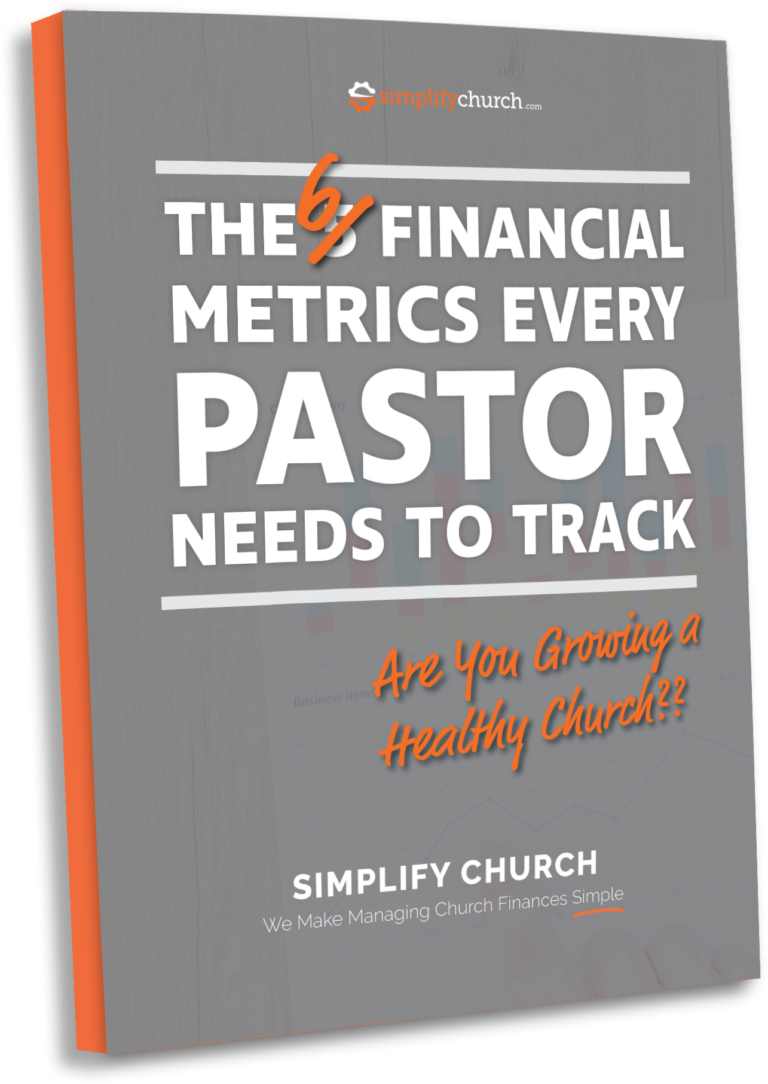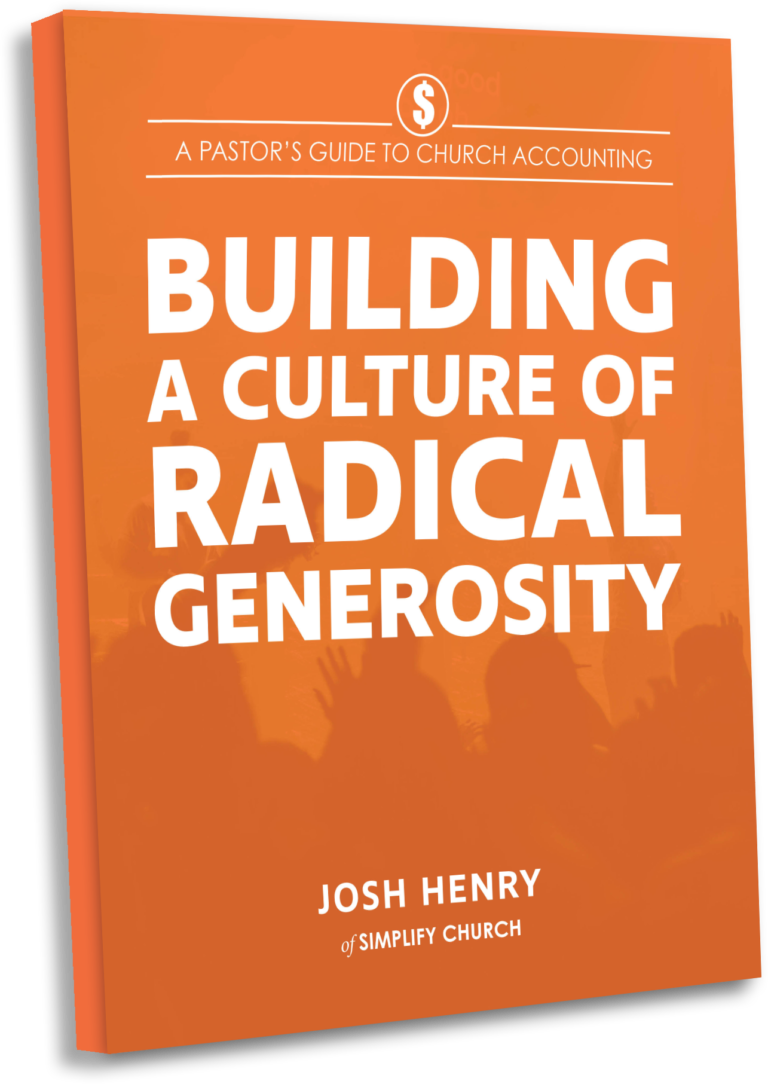Pastors and Church finances are one of those issues that can spark debates in churches. A myth has grown in our church that the pastor should not do anything with the church finances. While I’ll agree, the pastor should be at arms length between the actual handling of the finances, he still needs to be very much aware of what’s going on. One way to know the health of the church is to watch for giving and spending trends in the church.
At the very least, every pastor should view and analyze these 5 Church Financial Reports on a regular basis.
1. Church Statement of Accounts/ Profit & Loss
The most fundamental report a pastor should be taking a look at monthly. At a fundamental level, this provides insight into how much was money was deposited in the previous month, and portrays that against how much money was spent. Those totals are subtracted to get either a positive or negative number. Read this post if you’re curious about if a church can have net income.
“Don’t fret initially at the bottom line number. It is not an exact reflection of cash flow as deposits and expenses may be outside the date range. The bottom line of this report should be considered over a longer term to get real insight into trends that may be developing”
This report should be reviewed in month’s comparison so you can see trending spending by budget line. This will give you some insight into where your money is being allocated. You can also balance a level of detail between parent budget lines and child budget lines. (I don’t mean adult and children ministries here).
What I mean is the parent budget line of Children’s Ministry may tell you enough or you might want more insight and dive into the child line of that budget to see how much you spent on Cookies for Preschoolers out of that budget line. There is a definite balance on the level of detail you should be watching.
2. Church Budget Comparison
This is probably the most important report to consider as a pastor.
If you don’t have a budget (a plan) on how to use the monetary resources of your church, you have no way to make proper spending decisions. For Church Plants and churches with limited income, a budget is CRUCIAL!
While this report is very important, we need to have a quick understanding of what your budget actually is. Many churches put too much weight on the budget, or think that it is some sort of a legally binding document. While your Constitution or By-Laws may require you to operate on a budget, that budget in itself is merely a guide or spending plan. It details what you will spend and how you will use the church resources to fulfill your mission and vision
A Budget Comparison report will help you to analyze spending actual vs. planned.
You can look at this report on a monthly basis or create for longer periods of time. Both ways will give you insight into how money is being spent in actuality verse what you may have expected or planned.
Many churches and pastors cringe at the idea of having to prepare and develop a budget. In most cases, the hesitancy is more over not exactly knowing how to prepare the budget instead of it really being a big deal.
“We will be launching a Budget Building System in August 2016, click here if you want to be one of the first to know when it releases”
Properly managing you spending against your budget will help you to analyze and be sure you’re spending money exactly where you planned. Regardless of your budget analysis, you should take these ideas into account when preparing your church budget. For ideas about church budgeting on faith, spending on reason, click here for our post on that.
3. Church Giving Trend
While many don’t like to talk about it, money in the church is often a very crucial aspect to ministry.
For many pastors, the idea of managing money makes their eyes glaze over. For others, they have fallen victim to the myth that a pastor should not know about the church finances (blog link here).
Now we could make an argument that there is a level of separation the pastor needs between the finances and himself, in most cases, the senior pastor will be the one held liable or have the perceived blame for financial problems in the church.
As a pastor, you should know your giving trends. You need to have an idea of the amount of average weekly deposit, your monthly average income and the trend for the quarter. You should also track this each quarter through the year so you can find the trends and also lulls in giving months. Remember, summer is always a down giving time so knowing the actual numbers will help you prepare for the summer giving lull. If you’ve been around long enough, track those numbers by comparison to previous years. That way, you’ll see if you’re on a growth or decline trend in your giving.
4. Giving per unit metric
This is a metric that gets tossed around a lot, and there are quite a few different opinions on specifics but we’ll dive into a few strategies here. We’ll discuss real quick how to use this number, not necessarily any goals or benchmarks that you should have. In many cases, this is a planning and review measurement.
Take your total giving each week and divide that by the number of giving units. You can define giving unit on your own, but in most cases this is (total attendance – children / 2 (accounting for husband & wife together)) You can decide on your own measure here, just be sure you’re consistent so you can get accurate trends.
How to analyze?
This metric will help you make budgeting and spending decisions. It will also give you an idea of the generosity health of your congregation. When you know the giving per unit, you can then use that to forecast budget needs as your attendance grows.
$40 per unit * 100 people means you should expect $4,000 per week income or $208,000 per year. This will help you start your budgeting planning on income expectations.
Once you have the benchmark, if you watch that number month over month, you can get a pulse of giving in your congregation.
From our research, a health church average per unit amount is in the $40 range.
There are a ton of variables that could affect this number (newer believers, seasonality, angry members :), etc.) It’s not a hard fast measure but simply a measure to keep you in the know.
5. Individual Giving Changes
OK. I’ll say it. A pastor SHOULD know what individuals give in the church.
Now before you tar and feather me and call me a heretic, hear me out.
Giving is a spiritual discipline. As a person’s pastor, accountable for their spiritual development, how can you speak into a person’s life or hold them spiritually accountable if you don’t know the value of giving in their lives?
Now, you probably don’t need to collect a W-2 and do the math to determine if they are giving exactly 10%, In acutality that would be really creepy!
You probably don’t even need to know the actual number but you should know whether or not they are a giver. You can even know whether or not they fall into the average number of giving per unit.
If you don’t feel comfortable knowing the numbers, or even if they are a giver, have someone who does know get you a report of anyone whose giving has changed 15% in either direction in the previous quarter or 6 months. This will give you a good indication of a life change.
A word of advice. You should absolutely know whether or not your staff and key leaders are givers. Your key leaders and staff need to be stakeholders in the ministry.
BONUS!
Here’s a bonus report you should follow that isn’t necessarily a financial report, but will play a vital part in many of your decisions.
You need to follow an attendance report. We hear all the time that pastor’s shouldn’t be concerned about numbers and that is completely bogus. If you don’t have numbers to measure, you are relying on feelings and assumptions to make decisions and that is not a good way to do things.
Keep track of your average weekly attendance. Track numbers of volunteers each week as well. Also, track that in a monthly average so you can keep an eye on trends.
If you haven’t figured out yet, a key part of managing your church is watching for trends. Over time, trends in income, expenses, giving and attendance will develop for your church. Knowing these trends will help you better manage your ministry, lead your team and shepherd the church toward spiritual growth.
If you want to know more about how many of these reports can be developed for you without burdening a volunteer or taking your valuable time, get in touch with us and we’ll show you how our Church Bookkeeping System can help you better track and manage your church.




